Plant Tour Provides Firsthand Look at Digital Transformation
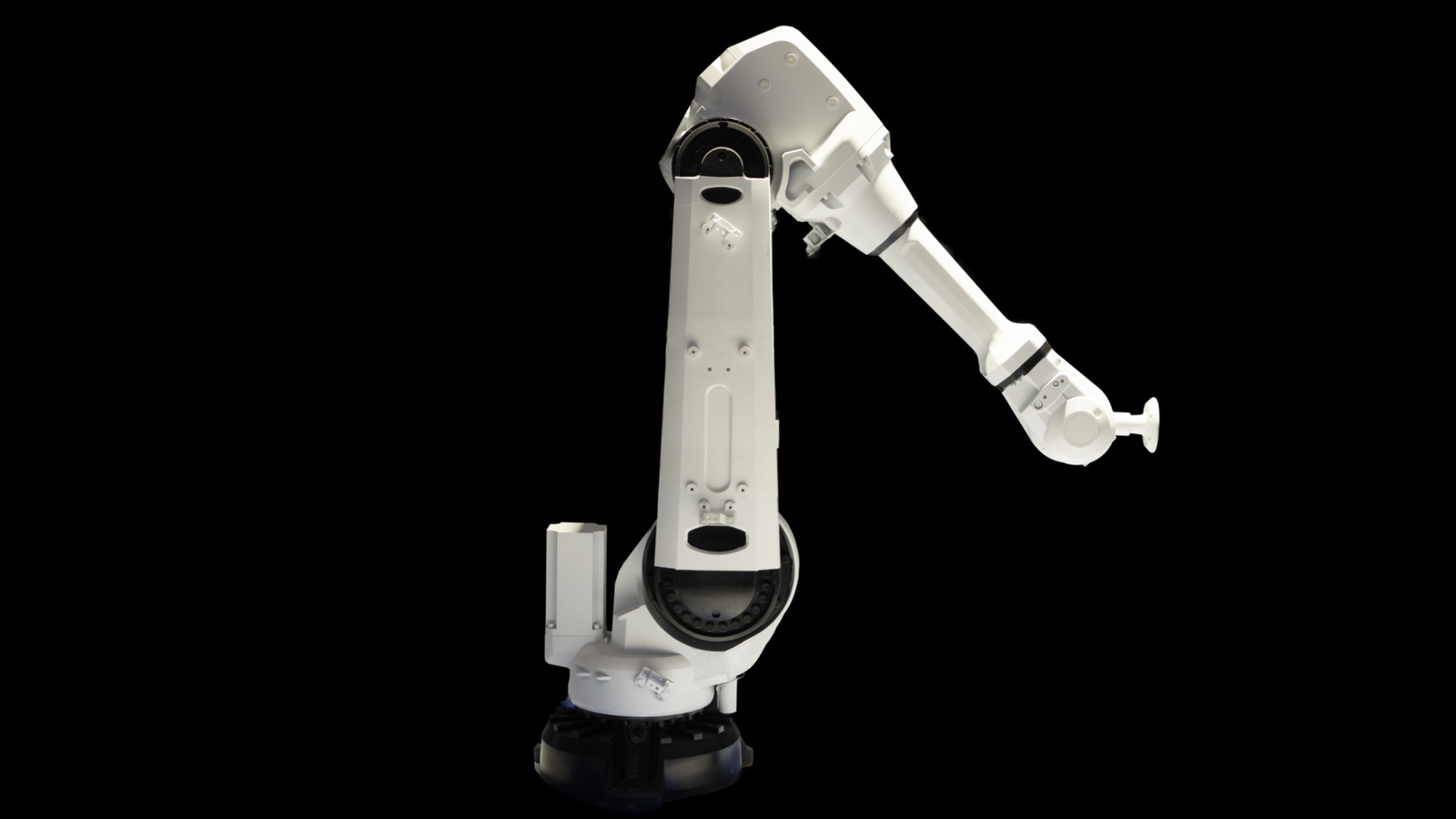
On a recent tour of Intertape Polymer Group’s Tremonton, Utah, plant, manufacturers saw disruptive technology in action. From employing 3D printing to slashing parts-making time to programming floor equipment to identify and fix problems quickly, the Manufacturing 4.0 processes and technologies were on full display. The NAM’s Manufacturing Leadership Council hosted the tour and brought 70 MLC members to the paper- and film-based packaging maker.
Growth: IPG, a Montreal-based manufacturer whose products include the cling film StretchFlex, has seen its revenue double in the past six years, from $750 million to $1.5 billion.
- The company now has approximately 4,000 employees across 34 locations, including 22 manufacturing facilities in North America.
What they saw: In addition to 3D printing and problem-solving floor equipment, tour participants got to see how IPG:
- Manages parts more effectively with an automated storage system; and
- Uses “hackathons” and employs a data-driven, digital-first mindset to find solutions to challenges.
Digital journey: In a briefing before the tour, IPG Vice President of Business Transformation Jai Sundararaman described why and how IPG undertook its digital transformation journey.
- First, the manufacturer conducted an in-depth investigation. This included studying 20 different technologies, attending more than 10 industry conferences, hosting technology summits with vendors and engaging in more than 25 networking sessions with fellow members of the MLC.
Phased transformation: IPG’s phased approach to digital transformation focused on delivering business value. The company undertook the following schedule:
- Phase 1: Align strategy and execution and “homogenize” operating culture. Upskill and retain talent with digital and process knowledge.
- Phase 2: Drive revenue and margin growth by applying digital technologies at scale in other functions, such as customer engagement.
- Phase 3: Leverage digital technologies for business model innovation.
M4.0 discussion: At the end of the IPG plant event, participants joined a panel discussion on data standards and analysis. Panelists discussed how to measure the return manufacturers get from implementing M4.0 technologies and how to get buy-in from employees and leadership.
Upcoming plant tour: Join the MLC’s next plant tour right from your desk on July 27. Participants will take a virtual look inside Accuray’s Global Manufacturing Center in Madison, Wisconsin. This virtual plant tour will highlight the challenges of a low-volume, high-complexity manufacturing and supply chain model. Register today to reserve your place.
Lilly Accelerates Innovation Under Mike Mason
What is Lilly Diabetes President Mike Mason’s goal for people living with diabetes? The simple answer is to improve and simplify diabetes management so people can focus on living the life they want.
 Forward-looking: Today, more than 537 million people across the world are living with diabetes. That’s why Mason and his Lilly Diabetes team are continuing to develop more innovative insulin and non-insulin medicines to help transform diabetes care.
Forward-looking: Today, more than 537 million people across the world are living with diabetes. That’s why Mason and his Lilly Diabetes team are continuing to develop more innovative insulin and non-insulin medicines to help transform diabetes care.
Lilly has played an important role in improving diabetes care for close to a century, starting with manufacturing and bringing to market the first commercial insulin, lletin, in 1923. Since then, there has been incredible innovation in insulin, shifting from animal-based insulin to recombinant DNA human insulin to today’s more modern analog insulins.
- “Thanks to a century’s worth of scientific advancements and discoveries, I am proud that we can meet the diverse needs of people with diabetes in ways we only dreamed were possible,” Mason said.
More to be done: Still, only about half of people with diabetes are achieving their blood sugar goals—leaving them at higher risk for long-term cardiovascular disease and other diabetes-related complications.
- For Lilly, that means keeping a “relentless focus” on the improvement of diabetes treatments and solutions, Mason said.
- “Importantly, delivering breakthrough treatments is just the start of what we do. Lilly is deeply committed to doing what we can to ensure everyone who needs our products can access them,” he added.
- Lilly offers a variety of affordability solutions through patient support programs and copay assistance across the major products of its portfolio. People with diabetes can contact the Lilly Diabetes Solution Center to learn about affordability solutions that best match their needs.
What’s coming: Lilly’s vision for the future is to maintain a relentless focus on raising the innovation bar for diabetes treatment, as well as in other serious metabolic conditions, including obesity, NASH and heart failure, to name a few.
- “Our diabetes pipeline includes a once-weekly injection, currently under review by the FDA that represents a new class of medicines to treat type 2 diabetes,” Mason said. “In clinical trials, this therapy significantly lowered glucose levels and body weight—and even helped many participants reach a non-diabetes glucose range.”
- “Our hope is to revolutionize how metabolic conditions are understood and treated, hopefully changing the way people manage conditions like type 2 diabetes and others,” he added.
Manufacturing support: Diabetes innovation is ultimately made possible by the people who work tirelessly to make life-saving medicines.
- “I’ve witnessed our team start with an extraordinary idea and determine the science to make it possible, and it’s our manufacturing team that brings these products to fruition,” Mason said. “Our talented and dedicated manufacturing teammates make delivering life-saving medications to people with diabetes possible.”
- Even at the height of the COVID-19 pandemic, Lilly employees in essential manufacturing and research jobs came to work each day “to make vital medicines for the world.”
The last word: Lilly is “in an exciting period of growth,” Mason said, noting a recent announcement from the company that it planned to invest $1 billion in a North Carolina site to create an injectables-manufacturing facility.
The investment “underscores our commitment to delivering innovative medicines to patients around the world,” Mason said. “And it taps some of the brightest minds from the local labor force to bring it to life.”
Finding Solutions for a Sustainable Manufacturing Future

With increased pressure from customers, regulators and even shareholders, sustainable business practices are no longer optional for manufacturers. From reduced energy and materials consumption to lower emissions and ethical sourcing, manufacturers are expected to meet ambitious new goals. Luckily, the Manufacturing Leadership Council has established a new member working group devoted to helping manufacturers reach these objectives.
Support set-up: With five virtual meetings each year, the M4.0 Sustainability and Net Zero Decision Compass Group will explore key issues, best practices and challenges related to creating sustainable, compliant and environmentally friendly operating strategies.
- At the first meeting, “Next Steps in Manufacturing 4.0 Sustainability,” on March 10, attendees heard from 3M Senior Vice President of Environmental Strategies and Fluorochemical Stewardship Dr. Rebecca Teeters and Lexmark International Chief Sustainability Officer John Gagel. Both speakers are also MLC board members.
Why the new group: The MLC decided to create the group after a survey of their more than 3,300 members revealed sustainability was a top member business concern.
- “We decided that given the intensity of interest in sustainability and related subjects, such as net-zero and the circular economy, this was an opportunity to dedicate a whole new group to the topic,” said MLC Co-Founder, Executive Director and Vice President David Brousell.
Good for business, too: While manufacturers have been discussing and working toward sustainability for decades, recent growing concerns about climate change and other environmental issues are making the matter increasingly urgent.
- Manufacturers that take on sustainable business practices are seeing competitive advantages ranging from cost savings to higher product quality to increased shareholder and employee satisfaction.
Lessons from manufacturing peers: The new Decision Compass group will share sustainability strategies, the real-world achievements of manufacturing companies, knowledge about the use and application of advanced technologies and timelines for implementation.
- Participants will also be able to see how they stack up against other manufacturing companies.
Get involved: The MLC offers resources to help manufacturers improve their operations and learn about digital manufacturing. To learn more about the sustainability group or find out about MLC membership, email [email protected].
Case Studies for Success in the Factory
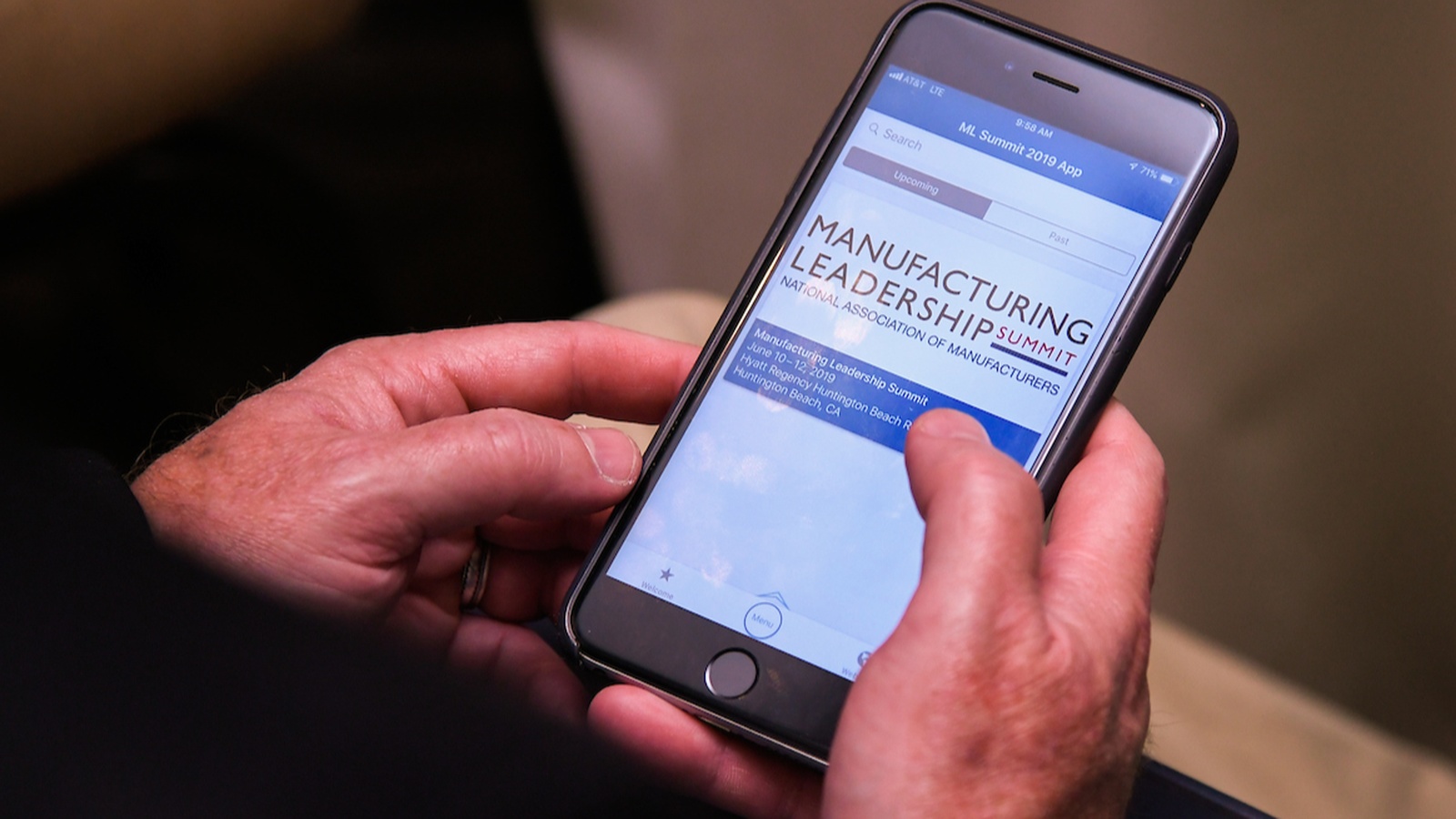
There’s nothing quite like a real-world test run to determine whether a new technology is right for your business. That’s where Rethink, the annual summit of the NAM’s Manufacturing Leadership Council, comes in.
The world’s leading event on Manufacturing 4.0, Rethink boasts an agenda packed with case studies to help manufacturing leaders see exactly how various digital technologies might help them improve their operational quality and efficiency.
The featured case studies coming to Rethink include the following:
- The Expanding Reach of Collaborative Robots: Examine practical applications for collaborative robots in manufacturing. Discover the benefits already being realized from the use of robots and identify ways to maximize the benefits.
- Extracting Insights from Plant Floor Data: See firsthand how to use data to monitor equipment performance, predict conditions and take preemptive action to avoid downtime. Gain practical takeaways on how to leverage data for bottom-line benefits.
- How AR/VR Can Empower Frontline Workers: Take a deep dive into one company’s advanced deployment of augmented and virtual reality technologies. Explore how these technologies helped transform operational activities and empower frontline workers.
- Fostering Data Literacy: The What, Why and How: Learn how to manage and analyze data from all aspects of your operations and use it effectively to improve decision making. Gain an understanding of the emerging discipline of data literacy as a way to overcome business culture hurdles.
How to participate: The Rethink summit takes place June 27–29 in Marco Island, Florida.
- In addition to case studies, the agenda will include inspirational keynote speeches, thought-provoking panel discussions and hands-on think tanks.
- More than 300 top-level executives and their teams attend each year.
- Participants include professionals in operations, IT, supply chain, engineering, C-level management, HR and more.
Click here to browse the agenda and to register.
NAM Launches Supply Chain Hub
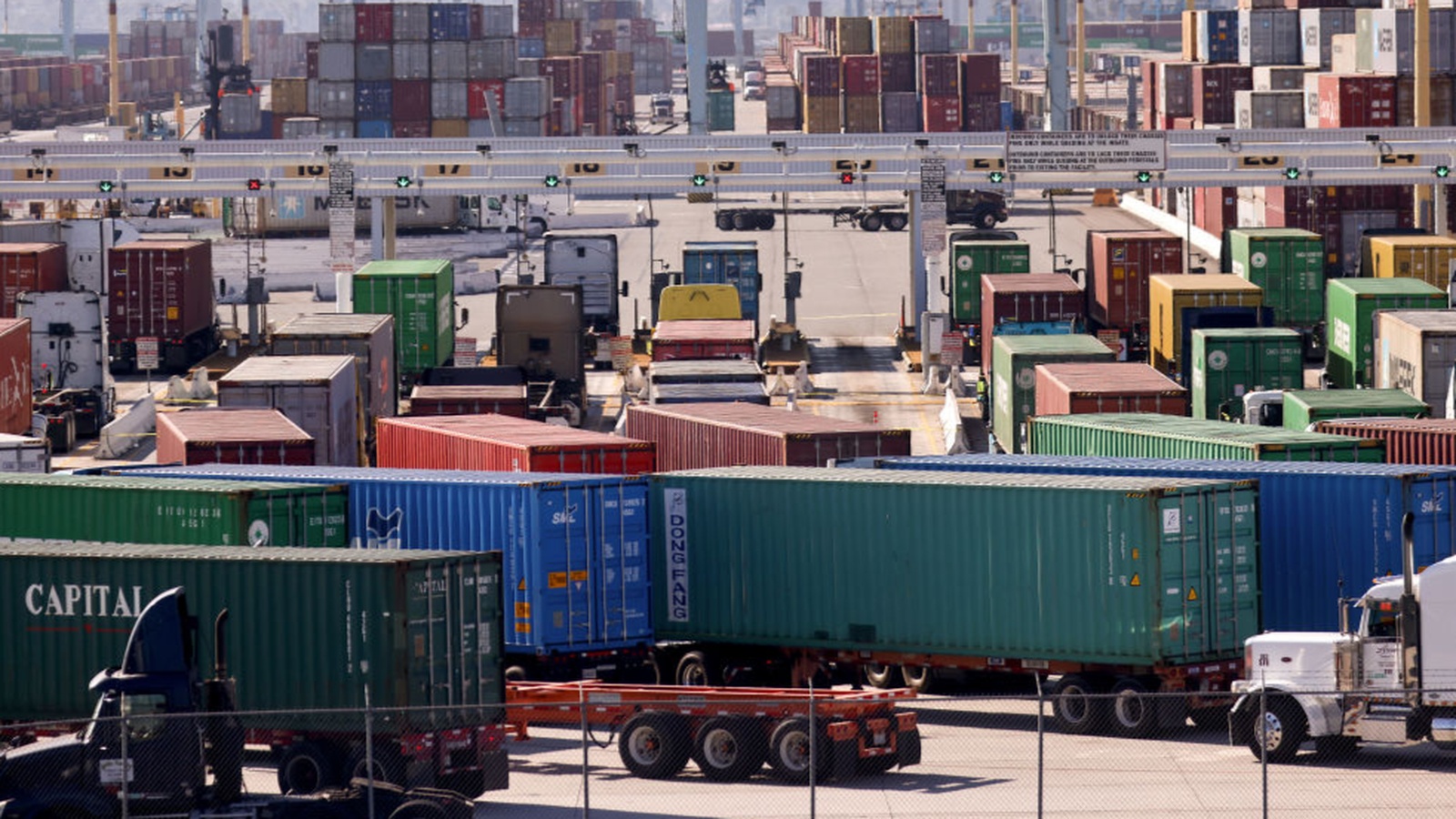
Manufacturers have been facing unprecedented supply chain challenges. The NAM is leading through this crisis—and we’ve launched an online resource that brings all that information and advocacy under one roof. At NAM.org/SupplyChain, manufacturers can find everything they need to know about the NAM’s work to strengthen the supply chain and access critical tools that can help them make important progress.
The resource: Assembled with critical assistance from the NAM’s Manufacturing Leadership Council and Innovation Research Interchange, this online resource captures the many activities underway and the information available from the NAM.
The work: The information and tools at NAM.org/SupplyChain cover a wide range of areas, including the following:
- Boosting competitiveness: With a level playing field, manufacturers in the United States can compete and win anywhere. That’s why the NAM is working with Congress on a range of competitiveness measures that would provide billions of dollars for supply chain resiliency, innovation and domestic semiconductor production as well as promote trade and combat counterfeiting. Actions like these give manufacturers the tools they need to succeed.
- Promoting operational excellence: Manufacturers are committed to performing efficient and innovative work—and this resource offers NAM members access to a library of meetings, webinars and other resources from NAM experts designed to help manufacturers share best practices and ensure their companies can grow and thrive.
- Building the workforce: The shortage of skilled workers is a major contributor to supply chain challenges. Through The Manufacturing Institute’s programming and key initiatives like Creators Wanted, the NAM is working to create a new generation of manufacturers while retaining and retraining vital employees.
Taking action: Through the NAM’s grassroots advocacy campaign, Manufacturers United, the NAM is mobilizing thousands of grassroots manufacturing supporters from across the country to engage lawmakers and community members alike on supply chain issues.
The bottom line: “Manufacturers have been grappling with significant supply chain challenges since the start of the pandemic,” said NAM Managing Vice President of Tax and Domestic Economic Policy Chris Netram. “The NAM’s new supply chain hub will centralize critical thought leadership and advocacy tools on this issue, as well as provide a guide to policies we need to grow manufacturing in America.”
What’s next: The NAM is fighting for a strong manufacturing competitiveness package in Congress this spring to help address supply chain challenges, as well as continuing the operational, policy and legal leadership captured in this frequently updated resource.
The MI Gets Funding for FAME
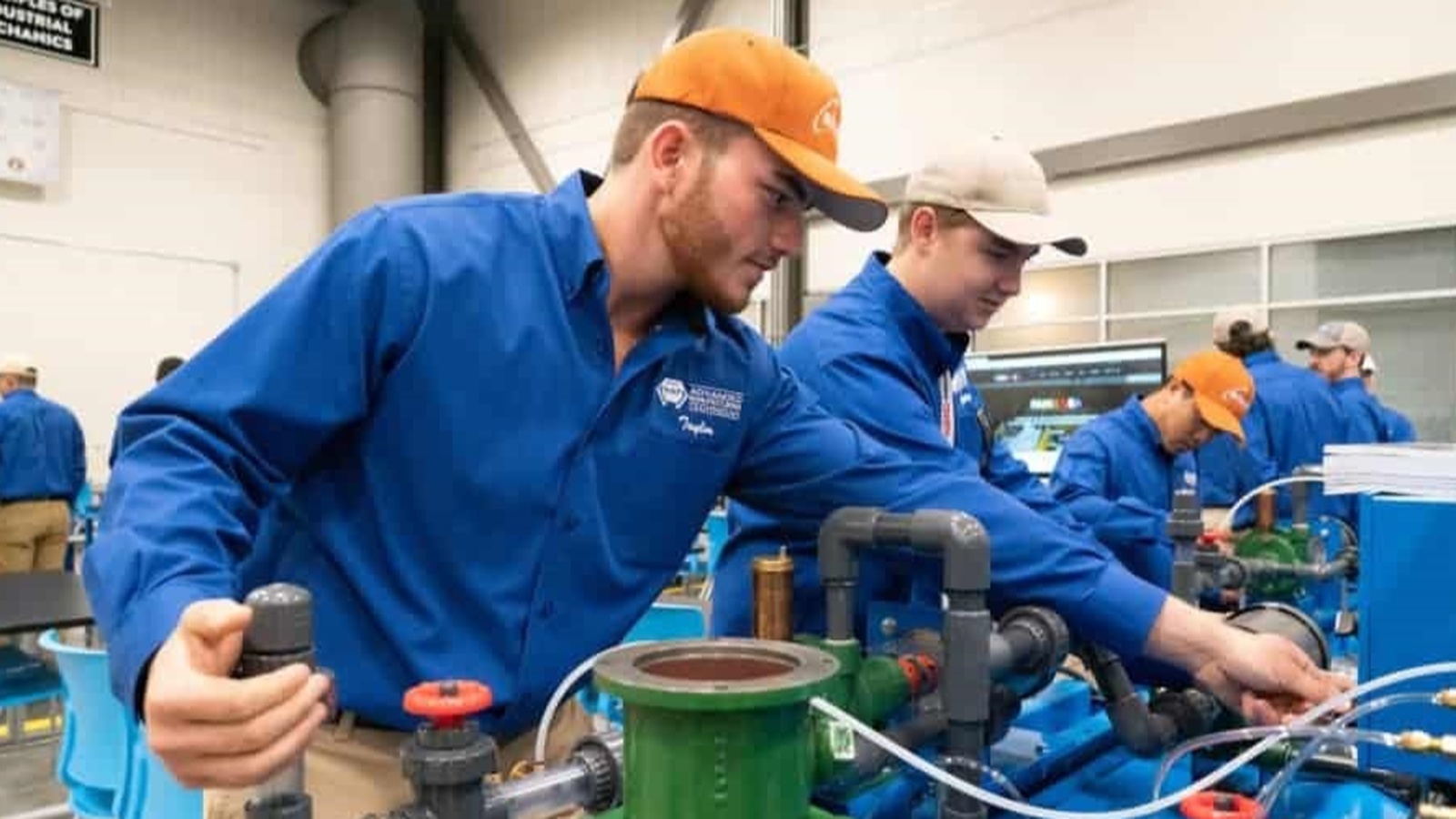
The Manufacturing Institute, the NAM’s nonprofit workforce development and education partner, has been named an inaugural recipient of Stanley Black & Decker grant funding for its “leadership and expansion” of the Toyota-founded Federation for Advanced Manufacturing Education (FAME) program.
The details: The MI, which currently operates FAME, a workforce development and training program, is one of 86 organizations chosen to receive funds from Stanley Black & Decker’s first-ever Empower Makers Global Impact Challenge grant.
- This year’s grants will help skill and reskill approximately 180,000 people in manufacturing through 2022.
- The program will give up to $25 million over the next five years to nonprofits “supporting trade workforce development initiatives in the construction and manufacturing sectors,” according to the MI.
Empowering makers: “Stanley Black & Decker is immensely proud to support the MI through their FAME programming as they work to skill and reskill the next generation of trade professionals,” said Stanley Black & Decker Vice President of Social Impact Diane Cantello.
- “Currently in the U.S., there are an estimated 650,000 open construction jobs and 10 million unfilled manufacturing jobs globally. Our purpose is to support ‘Those Who Make the World,’ and being able to fund educational programs and nonprofits that are revitalizing trade careers directly connects to our core mission. Thanks to this year’s Makers Grant Recipients, together we will be one step closer to closing the trade skills gap.”
The MI says: “Stanley Black & Decker’s commitment to FAME demonstrates how business can lead as they answer the call to grow the workforce of today and tomorrow,” said MI President Carolyn Lee.
- “We are grateful for their partnership in this effort to empower students with pathways to exciting, rewarding careers in modern manufacturing.”
About FAME: Founded in 2010 by Toyota, FAME aims to help students become highly skilled, sought-after makers capable of meeting the unique needs and challenges of the modern manufacturing sector.
Learn more about Stanley Black & Decker’s Empower Makers Global Impact Challenge at EmpowerMakers.com.
Outlook Hazy for Manufacturing 4.0 Progress, Survey Shows
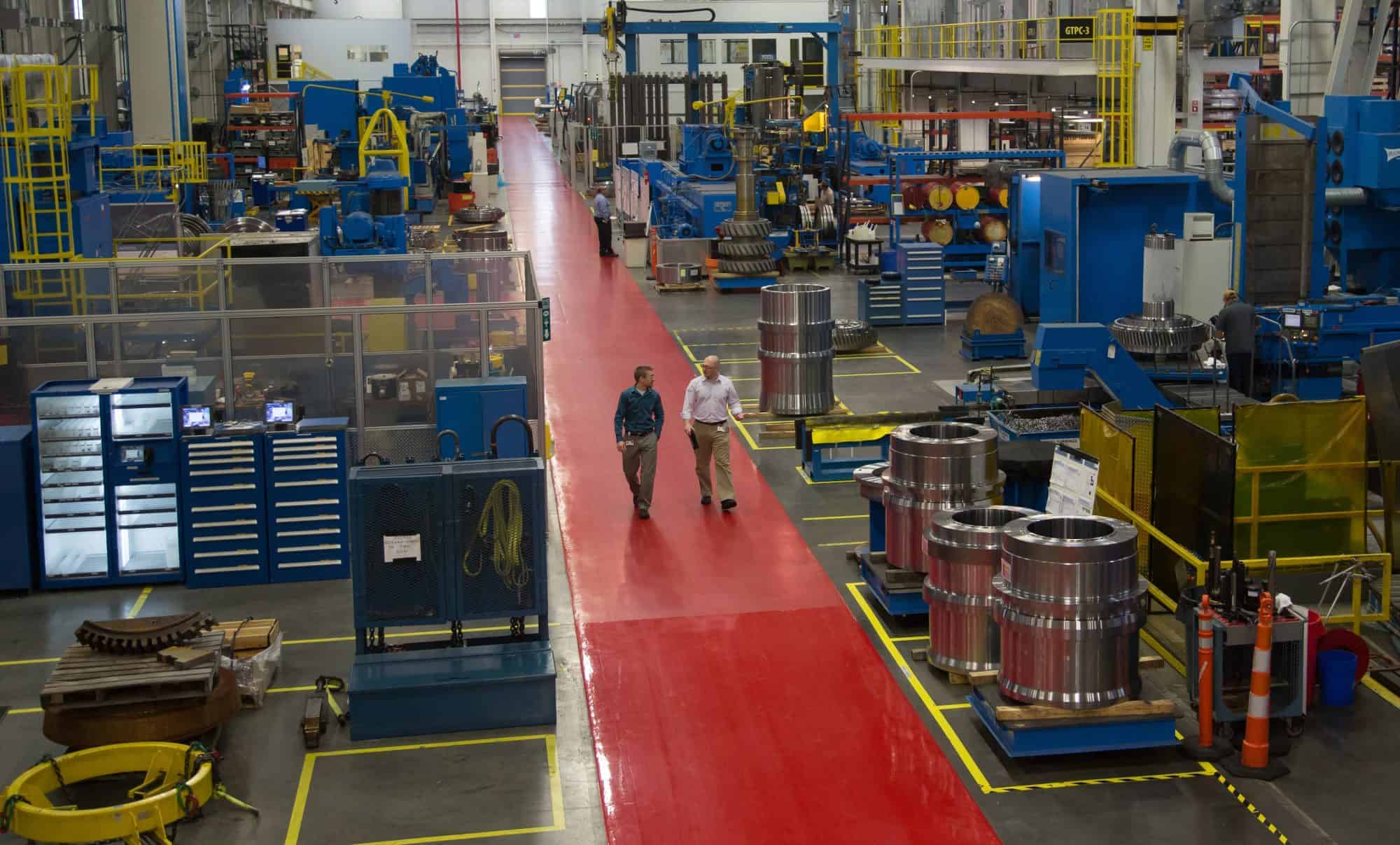
During the COVID-19 pandemic, many manufacturers raced to adopt advanced manufacturing technologies as a way to mitigate related disruptions. But there are signs the implementation is falling short of expectations, according to a new survey from the Manufacturing Leadership Council.
Is M4.0 adoption increasing? Respondents to the most recent survey were nearly evenly divided as to whether they were increasing digital-tool adoption in the wake of the pandemic: 30% said adoption had accelerated, 32% said it decelerated and 35% said it had not changed. Prior surveys overwhelmingly revealed that manufacturers were accelerating their digital investments.
Key findings: Other data points of note include the following:
- Most manufacturers gave themselves a low- to mid-level grade on their M4.0 maturity—somewhere between a 3 and a 7 on a scale of 1 to 10. When it comes to M4.0 roadmaps, the largest percentage of respondents (33%) said that formal roadmaps were still under development.
- Nonetheless, progress is being made in some areas. Customer support made the most strides in M4.0 adoption, with 12% of respondents rating themselves as advanced in this area compared to only 4% last year. Additionally, 20% of manufacturers surveyed said their plant floors are extensively networked and IP enabled, and 52% said they have digitization for production and assembly processes.
- More manufacturers are keen to take advantage of M4.0 technologies: 43% of respondents said they use machine learning, and another 27% said they plan to bring it online in the next two years.
- The biggest jump for planned usage is for digital twins: 32% of respondents said they plan to implement this technology in the next two years, on top of the 25% who are using it now.
Major risk: Many manufacturers find themselves in a perilous cybersecurity position, according to the survey. Just 19% have a fully formed cybersecurity program that includes workforce preparedness plans, employee training and routine drills that simulate a cyberattack.
- This is likely why 57% of respondents say that their company’s plant floor systems and assets are only partially secure against cyberattacks. The need to upgrade legacy equipment tops the list of potential challenges, with 59% of manufacturers reporting that they should do so.
Other struggles: Not surprisingly, 53% of respondents cited a lack of skilled employees as their top challenge. Some 39% said access to an adequate budget for M4.0 investments was their chief problem.
The takeaway: Despite these issues, manufacturers still see tremendous potential in embracing M4.0, according to the survey’s findings.
- Sixty-seven percent of respondents cited better operational efficiency as a top benefit of M4.0; 49% cited better decision-making, 47% cited greater speed and flexibility and 42% cited cost reduction.
- Disruptions of the past two years have made manufacturers want to move toward becoming factories of the future, but the realities of the ambitious undertaking are proving daunting. Those who persist, however, are likely to find great rewards.
How a 5G Smart Factory Doubled Ericsson’s Output

How will the 5G transition affect manufacturing? If you ask Ericsson Senior Vice President Åsa Tamsons, enormously.
5G will help drive global transformation, innovation and sustainability in our sector, Tamsons recently told the NAM’s Manufacturing Leadership Council. She sat down with MLC Co-Founding Executive Editor and Senior Content Director Paul Tate at Ericsson’s new 5G Smart Factory in Lewisville, Texas, to tell us more.
About Ericsson: Founded in 1876, Ericsson Inc. is a leading provider of information and communication technology. The company is now a $25 billion global enterprise with 100,000 employees serving clients in 180 countries.
About the Lewisville plant: Ericsson describes its Lewisville plant, which opened in March 2020, as a “5G-enabled, digital native” facility.
- “We wanted to be able to obtain data from every single source, device, machine and person operating in the facility, both now and in the future,” she said. “One part was implementing 5G, but we also needed a data architecture to secure that and to use equipment that is able to extract both production data and operational status.”
Development process: In its journey to Manufacturing 4.0, Ericsson used a particularly agile development process.
- “We had a mission to develop 25 use cases within a year,” Tamsons said. “In the first eight months, we launched seven of those 25 use cases. In the remaining four to five months, we launched the other 18. It just shows the power of doing that groundwork, while also demonstrating that you can launch end-to-end solutions in rapid time. Then you really start to have platforms that you can scale.”
Measuring impact: The Lewisville facility serves one of Ericsson’s biggest and most important markets in the world—yet it is operated by just 100 people.
- The plant delivers 2.2 times more output than similar sites that don’t have the same degree of automation or technology in place.
Lighthouse status: Lewisville is also one of the world’s first manufacturing plants to achieve Global Lighthouse Network status under the World Economic Forum’s new sustainability category.
- A combination of recyclable and reused materials, renewable energy, an ideal location close to a major airport and advanced manufacturing technologies supported this award.
- “Innovation is not all about technology,” Tamsons said. “It’s about how you apply it and how you can use the best of technology to create better solutions that are also more sustainable.”
What’s next: The Lewisville plant has plans for further innovation.
- “We’ll continue to build out the data structure and cloud capability, really focusing on how we can scale up the value of existing use cases and applications and on what the next use cases will be,” she said. “We’re continuing to invest in upgrading our manufacturing sites to develop a reliable, sustainable, global supply chain, not only in Lewisville, but across the world.”
Attend a plant tour: Join the MLC in Texas for the Ericsson Lewisville Plant Tour on Oct. 4–5 to see Ericsson’s 5G-enabled digital native, double Lighthouse award-winning plant for yourself. Save the date and watch for more details.
Meet the 2022 Winners of the Manufacturing Leadership Awards
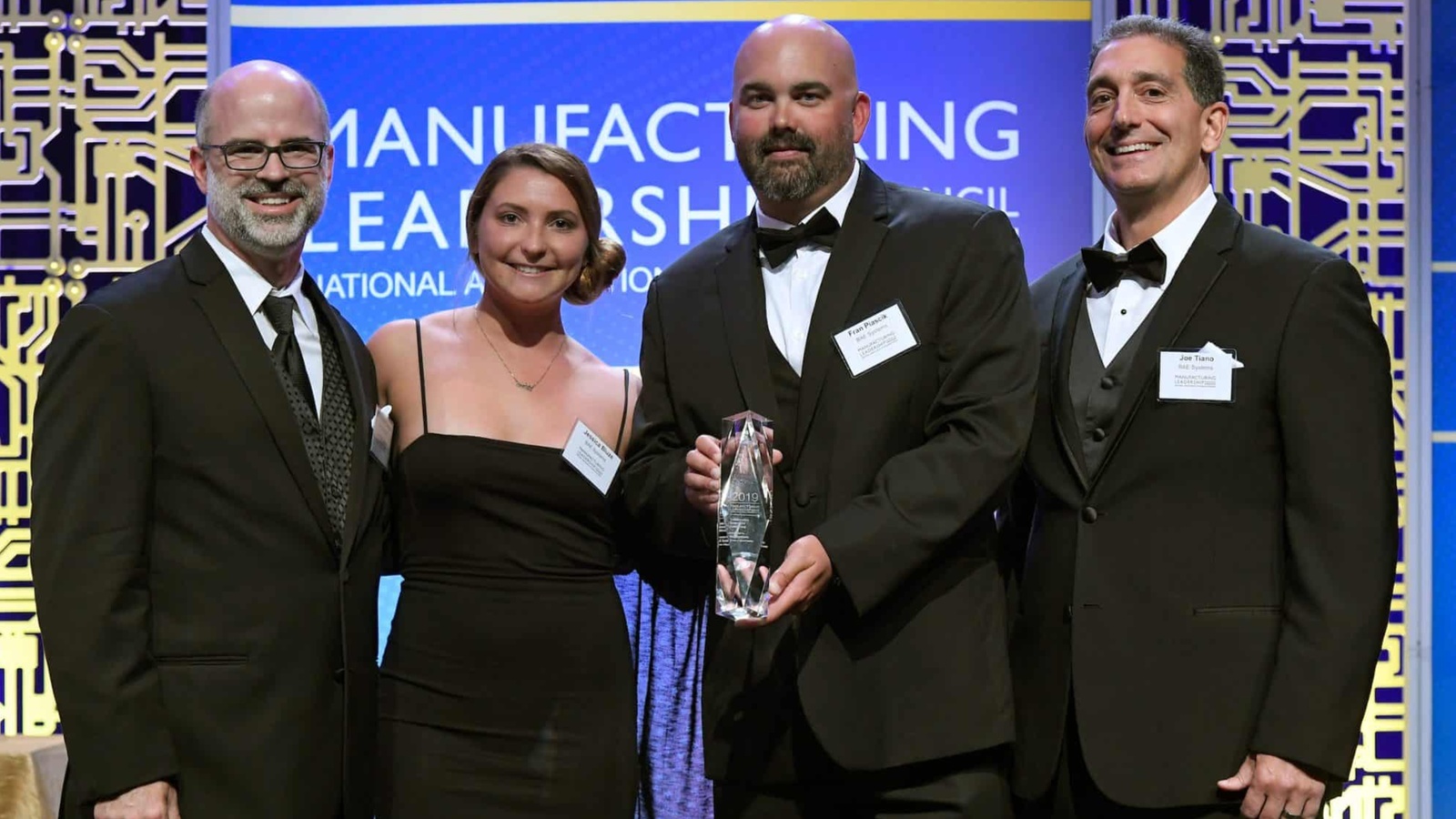
A group of world-class manufacturers and their leaders have been recognized for their achievements by the 2022 Manufacturing Leadership Awards.
About the awards: Presented by the Manufacturing Leadership Council, a division of the NAM, the awards recognize excellence in digital manufacturing. Since the program’s founding in 2005, more than 1,000 high-performing projects and individual leaders have been honored with an award. Winners represent companies of varying sizes in a wide array of industries.
This year’s awards were given in nine project categories and two individual categories. Some project categories include AI and Machine Learning, Digital Supply Chains and Digital Network Connectivity. Judging is done by a panel of industry experts, many of whom are past winners themselves.
Why it matters: The movement toward smart factories allows manufacturers to leverage data to become more efficient, productive, sustainable and competitive. In the difficult business conditions that many are experiencing, data-driven operations can mitigate disruptions and even predict them before they happen.
“This year’s winners are exemplary for their compelling use of technology, innovative approach to problem solving and overall commitment to furthering the progress of Manufacturing 4.0,” said Manufacturing Leadership Council Co-Founder, Vice President and Executive Director David R. Brousell.
Gala coming in June: Winners will be honored at the Manufacturing Leadership Awards Gala on Wednesday, June 29, 2022, at the JW Marriott Marco Island Beach Resort in Florida. The gala will also feature the announcement of this year’s Large Enterprise Manufacturer of the Year, Small/Medium Enterprise Manufacturer of the Year and Manufacturing Leader of the Year.
Select winners will present their projects at Rethink: The Manufacturing Leadership Council Summit, the industry’s premier event focused on Manufacturing 4.0.
See the complete list of winners here.
Bourla’s “Moonshot”: How Pfizer Innovated to Save Lives

In just nine months in 2020, Pfizer pulled off a scientific feat few were betting on: It produced an effective vaccine against the COVID-19 virus, an illness that at the time was contributing to thousands of deaths a week in the U.S. alone.
A ray of hope: Pfizer Chairman and CEO Albert Bourla shares the astounding story in his new book, “Moonshot: Inside Pfizer’s Nine-Month Race to Make the Impossible Possible,” out today. Part best practices, part personal memoir, “Moonshot” is at its heart a story about a manufacturer on a mission: to be part of something larger than itself and help the world.
Here, we share some of the highlights.
Tremendous sacrifice: “Pearl River, New York … where we had research labs, was also a community hot spot for the virus,” Bourla writes on page 87. “More than 350 people a day came into the Pearl River site in the middle of the pandemic. They were diligent with precautions—masks, handwashing, social distancing, protective gear—but they were coming in for long hours and through weekends.”
- “It was a tremendous effort under challenging circumstances. During the pandemic, we saw thirty-four hundred Pfizer colleagues infected across the globe. Dozens were hospitalized. As of July 27, 2021, twenty-three colleagues and four contractors had lost their lives. When I would learn of grieving families and families in distress, I would personally call or email.”
Innovation under pressure: “I remember vividly when [now Executive Vice President, Chief Global Supply Officer Mike McDermott] came to a meeting to present how he would increase production to three billion doses in 2021,” Bourla writes on page 92. “One of the … challenges would be that if we needed to increase the production capacity dramatically, we would need many replicas of … new equipment, and we didn’t have enough readily available space in our manufacturing sites.
- “‘I will have to build new formulation sites,’ Mike said, ‘and as you know, building construction takes years.’ And before I could ask him, ‘What you are going to do about it?’ he anticipated my question.”
- “‘But we have a solution. … We can order prefabricated modules that we can install in our Kalamazoo manufacturing site within months, not years. … [I]t can be done.’”
Lifesaving cold storage: “Led by a man who became known as the Ice Man, James Jean, our engineers designed a temperature-controlled thermal shipper that could transport and store the vaccine anywhere in the world,” Bourla writes on page 94.
- “We had been piloting the idea before COVID-19, but when the pandemic struck, we skipped the test phase and went straight to full implementation. The shipper, about the size of a carry-on suitcase, weighed about seventy-five pounds. It carried a minimum of one tray of vaccine vials and as many as five trays. Each tray had 195 vials, 6 doses per vial. So, a single shipper could carry as many as 5,850 doses.”
